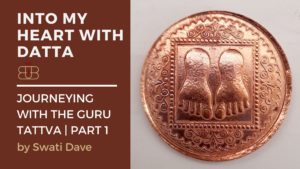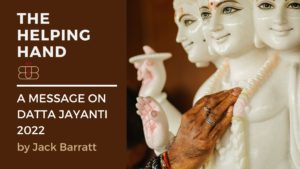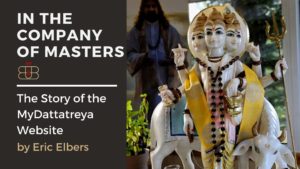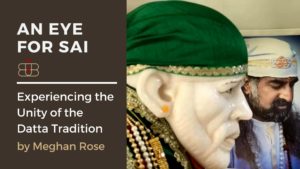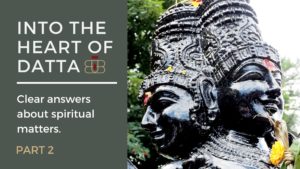Ganapathy Sachchidananda
Overview and Significance
Ganapathy Sachchidananda Swamiji of Mysore, India, is the living example of divinity personified, a manifest form of Lord Dattatreya according to his devotees. Recognizsed as having mastered the eight maha siddhis, this Guru from the Dattatreya-Avadhuta lineage is considered the highest of guides within the ancient Vedic traditions.
He is said to have perfectly realised the ideal of ‘samarasakarana’, perfect unification of the individual body with the Cosmic Body. When this ideal of ‘samarasa’ is truly realised, the difference between Matter and Spirit vanishes, the difference between the Finite and the Infinite disappears, the difference between ‘jiva’ and ‘Shiva’ passes away, the difference between the Self and the World ceases to exist. The Yogi then sees the world within himself and himself in all existences of the world. In his experience, his own body is spiritualised, and the whole universe is also spiritualised. To his illumined consciousness, the Absolute Spirit, Shiva alone exists in all the names and forms, and nothing but Him exists. Thus, he sees and enjoys the most beautiful and blissful Unity in all the apparent diversities. Samarasakarana is a concept expounded in Siddha Siddhanta Paddhati of the Natha Sampradaya. Such samadhi states of Pujya Sri Swamiji ended in the late 70s because he had a global mission to perform for the good of humanity at large, which required him to be aware of the outer phenomenal world, not as an ordinary mortal, but as one who is always aware of the Self and whose individual ego has merged into the Cosmic Mind, the source of all creations.
He is relentlessly engaged in fulfilling God’s mission to help mankind revel in the glory of the Eternal Spirit rather than waste their lives in transitory, self-centered, passion, and prejudice-laden, narrow pursuits.
Sri Swamiji’s efforts have solely been to bring about the religion of a ‘Universal Man.’ He has constantly kept in mind the four pillars of Vedic dharma, ‘Truth, Knowledge, Love, and Renunciation‘, and undertaken world tours. His intention has never been to spread the Hindu religion to other parts of the world. Whenever and wherever he talks, he stresses that ‘His is a religion of humanity and his language is music, and that he will assist in uplifting anybody irrespective of their religion or sect.‘ Swamiji declares that he will take the form of that individual’s guru and become visible to him in that form.
Sri Swamiji is renowned for his ‘Healing and Meditation’ music and is considered a divine guide who cultivates the ancient Vedic traditions.
Innumerable devotees from all walks of life, ranging from peasants or daily wage labourers to Heads of States and Government officials, follow His Holiness and look forward to his spiritual guidance for peace. Pujya Sri Swamiji has inspired thousands of devotees to start various socially beneficial educational institutions, relief to the poor, and annadanam across the Globe. Such relief centers are functioning in Trinidad, Venezuela, Peru, Europe, and India.
On a personal note, praise has come from many spiritual leaders of India to Swamiji, especially acknowledging his spiritual activities. Some of those leaders are Sri Kanchi Kama Koti Peetha Shankaracharya, Sri Sri Sri Jayendra Saraswati, and his deputy Sri Sri Sri Shankara Vijayendra Saraswati Swamy, Srirangam Andavan Peethadipati Sri Sri Sri Ranga Ramanuja Mahadeshikan Swamy, Vijayawada Sri Chinna Jeeyar Swamy, Guntur Vishwamji Maharaj, and the Dalai Lama. In addition, visits have been made to the ashram by former Presidents of India, Chief Ministers of many States, State Governors, Assembly Speakers, musicians, artists, social workers, etc.
Between 1976 and 2006, Swamiji undertook nearly 80 foreign trips. Three or four tours a year has almost become a standard. This includes many Islamic countries, Mexico, Russia, Ukraine, Sri Lanka, Peru, Yemen, Egypt, etc. On many such trips, upon his return to India, he received civic receptions by the Indian Prime Minister and President. The difference between trips before and after 1990 is that Swamiji started visiting some remote parts of other countries, which others had not undertaken before. This way, he would like to work out various other methods to establish ‘Universal Peace.’ Therefore he has visited and would like to visit those places where there is not a large concentration of His devotees.
GS Swamiji is the first spiritual guru and First Chair of an institution that has succeeded in leaving a monument proclaiming ‘Unity in Diversity of all Religions.’ He has brought out the special message from different religions and has shown that the final destination is the same for all. This aspect has been brought out in the form of the ‘Datta Peetha Dharma Pillar’ installed in June 2000 as part of his 58th birthday celebrations. It is a sixty feet tall monolithic structure that took nearly three years to prepare and construct. Swamiji personally hoisted the flag of ‘Dharma’ on top of this pillar. There are automatic electronic devices that bring out sound, light, and a fountain of water from this pillar.
By installing the Kalagni Shamana Dattatreya in 1978 at the ashram and forming the Sri Avadhoota Datta Peetham Trust ten years later, in 1988, he gave it the shape of an organised institution. To keep the continuity of tradition and activities of the Peetham, his sister Saraswati’s son was adopted by him, educated, and groomed. He received sannyasa, and Datta Deekshaand is now known as Sri Sri Sri Datta Vijayananda Teertha or popularly, Bala Swamiji. Upon his appointment, Bala Swamij received a blessing in the form of prasadam from the revered Kanchi Swamy.
Life History
Ganapathy Sachchidananda Swami (GSS) was born on May 26, 1942, in Mekedatu, a small village in Karnataka, India.
His father, Sri Gandluru Narasimha Sastry, a scholarly Vedic priest, and his mother, Jayalakshmi, a yogini, named the child Satyanarayana. His father was from Andhra Pradesh with the family name of Gandluru, belonging to Bharadwaja Gotra.
Mekedatu is a small village near the confluence of three holy rivers, the Kaveri, the Arkavathi, and the Guptagamini, in the Sahayadri mountain range. His birth is said to have occurred on a rock in the Kaveri while his mother was in deep meditation. The Sahayadri hills are said to be the divine abode of Lord Dattatreya. Mekedatu is a pilgrimage spot due to the presence of an ancient Shiva temple called Sangameshwara. This sacred place is famous as ‘Agastya Kshetra,’ i.e., the pilgrim center sanctified by Sage Agastya.
(Ganagapur, associated with the second Datta Avatar Narasimha Saraswati, is also situated near the confluence of two rivers and has a Shiva temple by the same name Sangameshwara. Narasimha Saraswati is said to have miraculously vanished in the river Krishna in Srisailam. Incidentally, GSS Swamiji happened to get his ‘kashaya vastra grahana’ (getting saffron robes as part of initiation into sannyasa) while taking a holy dip in the river Krishna in Srisailam).
Interestingly, Sri Swamiji has paternal and maternal backgrounds of forefathers who were great musicians and musicologists of immense fame. Also noteworthy is that Sri Swamiji belongs to the lineage of the great Venkatamakhi, architect of present-day Carnatic music -72 Melakartas system (referred to as ‘Panini’ of Carnatic Music). It was natural that the Nadopasana (worship through music) descended to him as a family trait, and He continues to do so.
Satyanarayana’s mother, Jayalakshmi, already an adept on the spiritual path and blessed by divine communion with Lord Dattatreya and many mystics and saints, took the responsibility of molding young Satyanarayana’s spiritual life and became his first and foremost guide and Guru; he flourished under her care.
From childhood, his inherent yoga energy was awakening and manifesting. He was trained by his mother and Guru until 1953, when she left her body at will on her birthday, Shankara Jayanti.
Mata Jayalakshmi’s Gurus were Fakir Tatha, a Muslim saint, and Karapatra Swami. While a disciple of these Gurus in Mekedatu, Mata Jayalakshmi experienced a divine vision of Lord Dattatreya, who informed her that he would take birth in her womb. Mata Jayalakshmi lived the life of an exemplary wife and mother with her husband, the late Narahari Teertha Swami, in Bommeparti. As described in her words in Swamiji, The Manifestation: ‘When I came to accept this auspicious and ancient institution (marriage), I found that each work I did in my house was a spiritual exercise. Cleaning the cooking vessels, utensils, and drains in and around the house was also Upasana (spiritual practice) to me. Unfortunately, people have forgotten that God created righteous and virtuous duties and that to do one’s duty is a sacrifice, a sacred yajna (ritual). Managing my family is my duty, and it is an act tantamount to religious sacrifice.‘
Mata Jayalakshmi taught Sri Swamiji Raja Yoga and Sri Vidya during his childhood. She would explain the esoteric meaning of the Vedas, Puranas, Mahabharata, and Ramayana. When Sri Swamiji was eleven years old, Mata Jayalakshmi gave Him shaktipat initiation in the Anjaneya Temple. During the initiation, Sri Swamiji experienced a vision of Mata Jayalakshmi in Her universal cosmic form as the Divine Mother Goddess Rajarajeshwari. As written in Swamiji, The Manifestation: ‘His mother was now dressed in a green sari and decked in extraordinary gems and ornaments. She was seated on a golden throne decorated with nine different precious stones. At Jayalakshmi’s feet, countless swans appearing in a subtle form began to gather. In his mind, Satyanarayana circumambulated around the glowing feet of his Mother as he would for the Divine Mother. His spirit then merged with the swans taking refuge at her feet, and he lost all sense of himself.‘
Mata Jayalakshmi concluded the initiation with twelve maxims to guide Sri Swamiji’s spiritual practice:
- See only me in all women.
- Be compassionate to the meek and downtrodden.
- Whatever conditions or circumstances you find yourself in, act only according to the scriptures.
- Save a righteous soul even at the risk of your own life.
- Give up discrimination. Consider all beings as one and the same.
- Whatever difficulty may arise, you should not set aside your routine practice. At the same time, it should never afflict others. However, it shall always be helpful and do good to others.
- Behold me in all beings.
- Never abandon the truth.
- Grow sharper and sharper in your knowledge of divine wisdom so you may make it easy and attractive in its form and style to the mass mind.
- Never openly proclaim what your future incarnations will be.
- Undertake the task of propagating dharma and virtue. This, too, should be done in an easy style as is feasible.
- It doesn’t matter if you suffer, but lead your life in such a manner that it won’t cause any inconvenience or suffering to others.
Aunt Venkamma, from his father’s side, a haṭha yoga master, continued guiding his rigorous yoga training until it was complete. His compassion and desire to help others were apparent among his friends and included strangers in need. He performed various mundane jobs to earn a living for some time, such as school teacher and postal worker. All along, however, he had been serving his fellow humans, helping them with their problems. He understood their situations through his miraculous powers, knowing their past, present, and future, and helped them overcome difficulties. Some of them became his first disciples, who were soon to be followed by more. He sang bhajans and kirtans for them and started giving yoga classes in small village huts or on river banks while wandering the countryside as a monk. Thus, he acquired a following which demanded all of his time and attention.
Kesere, a small suburb on the outskirts of Mysore in Karnataka, became the first ground for Satyanarayana’s spiritual revelation to the world. As time passed, the number of people flocking around him began to grow, and he began to be known as Satyananda Swami, then as Kesere Ganapati Swami. In 1966 when Sri Ganapathy Sachchidananda Swamiji visited KotiLingala Ghat in Srisailam, the previous incarnation Sri Narasimha Saraswati gave darshan and Initiated Sri Ganapathy Sachchidananda Swamiji into the Avadhuta lineage (‘Shona Vastra Deeksha’). During the 60s and the early 70s, on many occasions, Sri Swamiji would go into states of Samadhi – losing the outer consciousness of the world and would fall flat on the ground. In 1966, followers bought about ten acres of land by the foothills of Chamundi near Mysore, the yoga capital of India, and he moved to the site (now the Mysore Ashram), which in the early days was only a straw hut in a field. He then announced himself as Ganapathy Sachchidananda and converted the barren land into a flourishing oasis, establishing the Avadhoota Datta peetham there.
As with many great yogis, music became an integral part of his satsangs (yoga gatherings); yet in Sri Swamiji, superb natural talents emerged along with extraordinary musical energy. Sri Swamiji began to play various musical instruments without training, expressing his original and unique compositions. He would chant for hours at a time from a place of deep meditation. With his powerful voice, he sang one melody after another. Devotees began to gather from across India and all corners of the world to hear the spiritually charged music and seek his wisdom
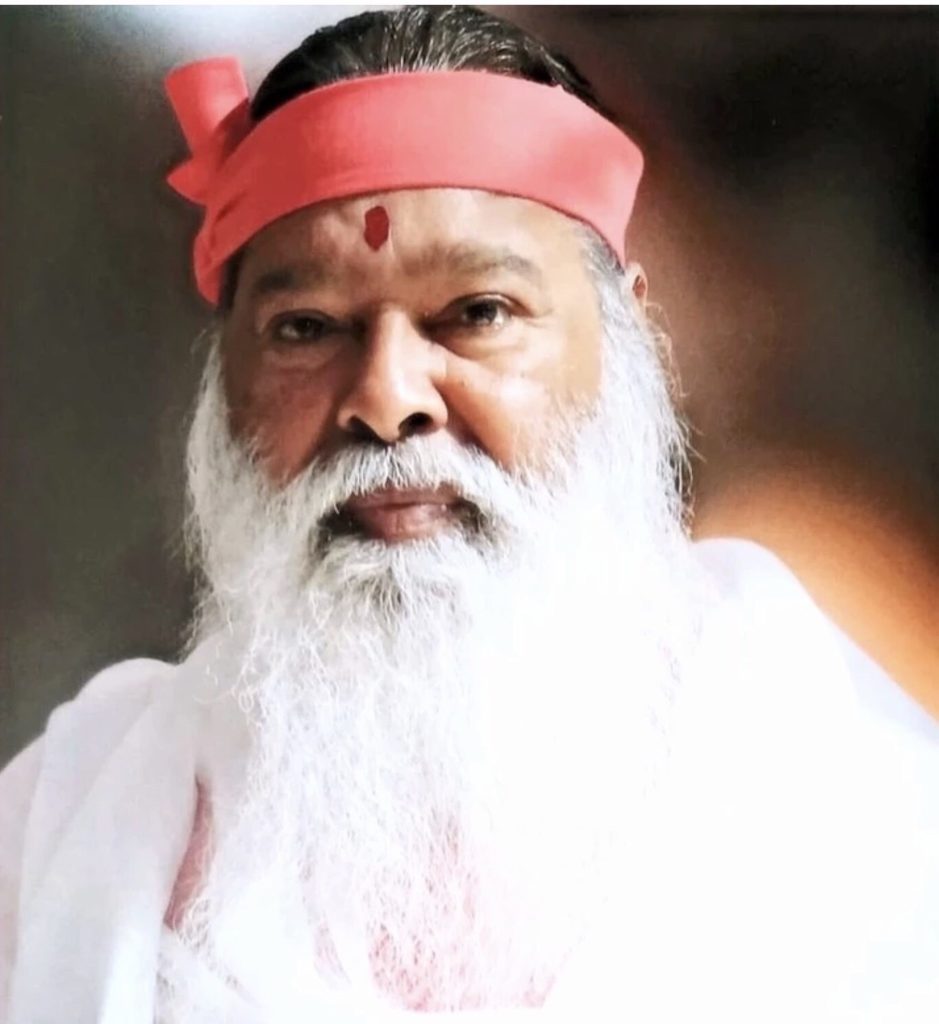
Tradition and Gurus
A pious Brahmin by the name of Linganne Sarma lived in the village. His wife was Savitri. The couple was ritualistic, kind, and noble. In the pleasant season of spring, in the month of Vishakha, on the fifth day of the brilliant fortnight (the day on which Adi Sankaracharya was born in the 7th century), the divine child Jayalakshmi was born. She was beautiful and had a holy, noble power of attraction. She radiated mercy, peace, and piety as she grew up. She was a source of endless joy to her parents, worshipped Lord Shiva (Sangameswara) daily, and served the saints and sages. A Muslim Fakir initiated her. As a result of severe penance, she attained God-realisation and divine powers. She used to enlighten people regarding righteous living and helped them progress in the service of God. With her spiritual powers, she cured the sick and suffering and, with her divine help, relieved many people of their problems. Eventually, she married Sri Narasimha Sastry. This divine woman, Swamiji’s mother, was his original Guru.
Teachings
- Enjoy your wealth by sharing it with others.
- Sing the Divine names of God every day.
- Strive to cross the ocean of samsara (worldly life) before your body becomes weak.
- Those who criticise you are your true well-wishers and Gurus. Respect them.
- Realise that God alone is your true friend.
- Abandon ostentation. Lead a life of contentment, compassion, humility, and generosity, and be ever engaged in prayer.
- Do not ask God for anything.
- Do not forsake moral restrictions.
- Do your duty with unflinching devotion towards God.
- Always remain contented.
- Keep good company.
- Endure pain and sorrow with courage and fortitude.
The most important feature of Sri Swamiji’s mission is to help people realise the divinity within them and attain oneness with God.
Sri Swamiji always states that practicing humanity (Maanavataa) should be our motto.
Accordingly, Sri Swamiji’s message has been widely appreciated in many communities of both eastern and western hemispheres with no barriers of nationality, creed, sect, caste, and religion. Community leaders worldwide have welcomed His Holiness to give discourses, present Music for Meditation and Healing concerts, and conduct Datta Kriya Yoga sessions.
Dharma is the eternal principle that differentiates humans from other creatures, and Dharma alone upholds the peaceful coexistence of various beings in God’s creation. Though many pantheons (different from each other) prevail universally, the principle remains the same. Sri Dattatreya (incarnation of the Hindu Trinity of Brahma, Vishnu, and Shiva) has preached the essence of Universal Family with three concepts: do for others that which you expect from others; try to behold the divinity in every being; observe all objects and creatures and try to emulate the good in them and shun any evil aspects.
Sri Ganapathy Sachchidananda Swamiji sees Himself in others. They are not different from Him. He will play and behave like a child with children, and with the learned, he will be scholarly. He does not have His own separate will to be projected in any particular manner. Possessed by the Universal Divine current, He becomes an instrument of the Divine, and His behavior, in diverse situations and contexts, becomes a spontaneous and instant display of Divine Energy.
Sri Swamiji’s generosity as well has transcended all limitations of language, faith, or region. He is equally at ease while raising donations for the renovation of a cathedral in Romania, feeding hurricane-ravaged localities in the US, rebuilding ancient temples, providing a stipend to impoverished students among Muslim brethren, or organising orphanages in Peru and Trinidad.
While Sri Swamiji has been an ardent follower of traditional Vedic teaching, his vision has always been to respect all religions equally. The following events from his childhood are proof of this statement:
A) Even before he became a Swamy, he showed great affection to Khader Tata and cleared his hunchback when he was in Mysore.
B) After becoming a Swamy, he took Mr. R. K. Swamy, a Christian, as the main harmonist in his band. Mr.Swamy stayed with Swamiji for nearly three decades.
C) In the daily prayers at the ashrama, he has incorporated prayers to highlight equal respect to all religious denominations.
D) The conference by the heads of the three fundamental schools of Hinduism in 1971 and the inauguration of Sri Ramanuja Madhva Shankara Kuteeram.
E) Construction of the Universal prayer hall in 1984.
F) The inscriptions on the roof of Datta Mandiram (in 2002 after the reinstallation of Dattatreya) displaying the signs of all the religious denominations.
As a permanent solution to the ills facing the world, Sri Swamiji took up the theme of ‘Sarva Dharma Samanvaya Sravanti’ (The theme of equality of every religion, sect, flowing like a river) on the auspicious day of Datta Jayanti in Dec 2000. Sri Swamiji explained the message of Datta on the significance of equality among all religious denominations. Dattatreya has been personally arousing humanity to the spiritual needs relevant to time, place, and country from time immemorial. On the expiry of that particular period, realising that he has to trim those doctrines and preach with tender love and affection considering the differences due to eastern and western philosophy, he has taken up the role to fulfill the mission of ‘religious equality and tolerance.’
To understand this wisdom, every learned man and woman must question these issues. They have to search for the answer to those questions with a searchlight directed to their hearts.
Every man has to put a question, ‘What would I have done if I was a woman?’ Everyone in society, women, workers, youth, older people, etc., should question themselves similarly on this issue.
There is another crucial question to find the answer for, that being, ‘What would I have done if I had been born into a different religion?’ One group in the society is fighting for what they know, believe, and see. The other group is those who fight for their faith. They fight for what they have not seen and are also not confident of seeing it either. It is their specialty! There is only one solution to this problem. Those who think they are great must meet and amicably discuss with those others who think they are great. There should be mutual love and respect between the different groups. To make this a reality, every individual must learn to sincerely understand and practice his faith and let others practice theirs.
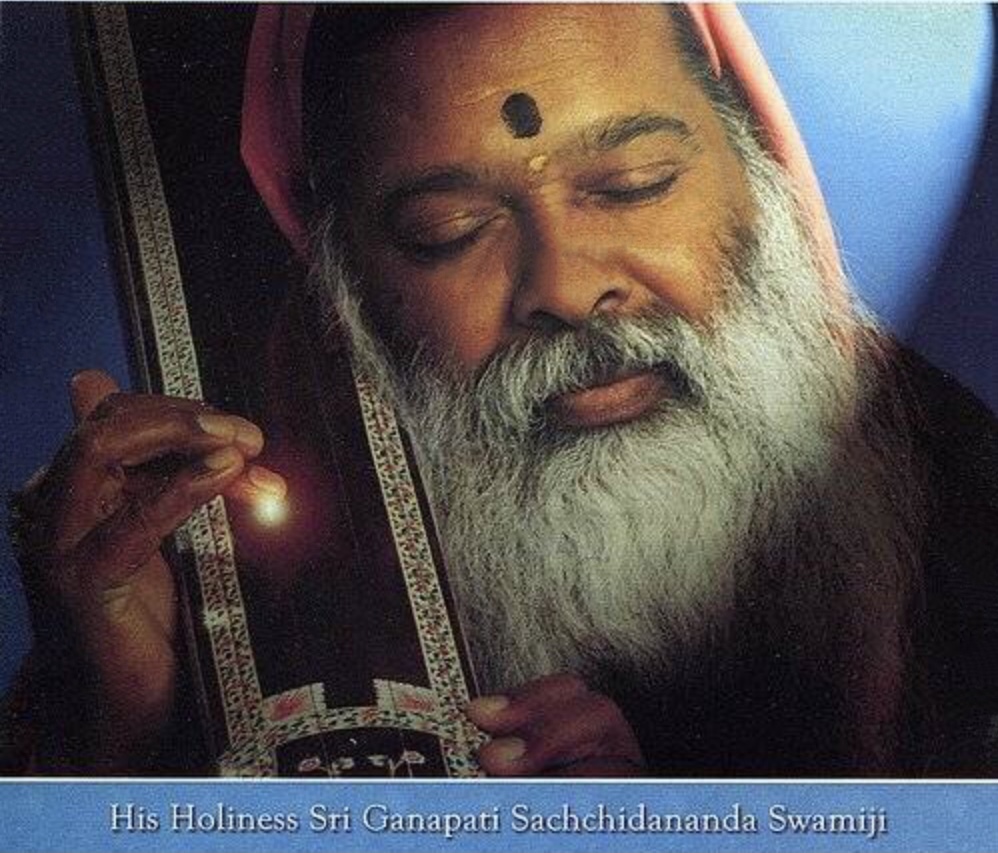
Sacred Practices/Sadhana
One of the special and unique mantras recited daily by Swamiji and prescribed by him for his devotees is:
‘Sripada Vallabha – Narasimha Saraswati – Sri Guru Dattatreya Namaha.‘
Sri GS Swamiji began teaching to small groups in Jammu, Vijayawada, Mysore, and elsewhere in India. His spiritual depth is evident when he speaks about yama, niyama, asana, pranayama, pratyahara, dharana, samadhi, etc., and also about the nadis, mudras, and the power indwelling spirit as Shakti and kundalini energy. He also teaches about the creative use of the mind, focusing on the inner energy fields (chakras).
He stresses the need for Hatha Yoga to gain suppleness and flexibility of mind and body.
Sri Swamiji is world-renowned for the non-intrusive and mind-friendly methods of reducing stress. Sri Swamiji has renovated the Kriya Yoga principle, which encapsulates Hatha Yoga (the current-day, exercise-based Yoga Practice) and Raja yoga (involving mind control through breath control). He has spoken about the power of breath (let the breath take you into the body, breathing in light).
Kriya yoga has been practised in India for thousands of years. To gain supernatural powers, sadhus and yogis practiced controlling the mind and body through Kriya Yoga. In this current period, we are learning such ancient practices of Kriya Yoga for the fulfillment of inner needs by His Holiness Sri Sri Ganapathy Sachchidananda Swamiji. He also carries the tradition of Dattatreya Yogis of the past.
Kriya Yoga helps aspirants to learn to activate and control their senses and to control their thought processes. Kriya Yoga involves learning breath control (Pranayama) to effectively channel the prana (life force) flow, traversing the 72,000 nadis or astral nerves in the human body. The aspirant learns to direct mental power to open the three granthis, important knots in the nervous system, which obstruct the rhythmic flow of prana. By undoing these knots, a kriya yogi opens the path for Kundalini energy to flow. According to the Markandeya Purana, Kriya Yoga was revealed by Lord Dattatreya to great saints and yogis of ancient India.
His Holiness Sri Ganapathy Sachchidananda Swamiji urges anyone to take a deep plunge into the teaching of Kriya Yoga without resistance, initiating a student in how to transcend body limitations. He suggests the meditative way to get in touch with the universal life energy. He lives day-to-day, perhaps in absolute stillness, yet performing all other external activities perfectly. He has respect for the daily duties of man in this physical universe and instructs not to differentiate between this world and the other world. His students report a deep sense of peace somewhere in the background, which they cannot express, a stillness of mind no matter whatever happens in their lives. They feel they are ready to face external challenges with more power and have developed a deep respect for yogic teachings. Swamiji has spoken about the inner body portal, the dream portal, and the absolute beyond.
Swamiji’s Kriya Yoga is a spiritual teaching to awaken a student from body consciousness. Swamiji says that while the physical body is subject to disease, old age, and death, the ultimate real You and I are essentially deathless. Kriya Yoga, therefore, talks about going beyond birth and death and getting away from the limitations of body and mind that are changing and illusory. He asks that we not fight with our bodies, which are ‘karmic packages’ but work instead on restructuring the body and its fragments through Pranayama and Pratyahara. The most profound connection for all this is a powerful Master. Spiritual practice should be done regularly, and this is the only chance in human life to survive as a Yogi. Be alert always, get rid of old patterns, get away from anger, jealousy and defensiveness, and the urge to feel limited.
All good and evil are relative to an individual point of growth. But at the highest level, there is no good or evil as such. Once we develop the awareness and reach a particular stage of development and take the attitude that the Almighty is everywhere; He is always perfect, and He neither kills nor destroys. That is the height of realisation in Kriya Yoga. Despite the complexities of human life, a Kriya Yogi is moving towards spiritual perfection by meditation and repetitive sadhana. There are three aspects to this:
The first is to seek a Perfect Master who has realised the truth of Kriya and who holds the key for awakening another person (people like Sadguru Swamiji, who is always in fearlessness and peace). The second aspect is being in the region of purity, unconditionally, always (Samadhi). The third is indicating authority and power, which is a dynamic aspect (Kundalini Yoga aspect). All three aspects have to be realised.
Sri Swamiji’s unusual charm and energy have caused faith in yoga to grow in Kriya students. His students who have been practicing Kriya Yoga for more than 2-3 decades have succeeded in peace and stability. According to GS Swamiji, Kriya Yoga involves using the disciplines of various traditions. He has been conducting such Kriya Yoga sessions for over four decades in India, the USA, Europe, Australia, the Middle East, and Africa. The International Kriya Yoga Center established by Sri Swamiji works to propagate this wonderful concept of Kriya Yoga by conducting elementary, introductory, and advanced classes worldwide.
During the traditional Navaratri festival, his methods of worship represent Kundalini Yoga for the conscious arousal of energy and pure thoughts. He speaks about the closeness of Mother goddess and yourself and takes you to the portal of the unmanifest power.
He has envisioned 700 crores (7 billion) Hanuman Chalisa Mahayajna for universal peace.
Sri Swamiji is perhaps the most famous music saint of our times. Naada and Bhakti Yoga are the essential aspects of Swamiji’s music. Swamiji has a beautiful, unique, and resonant voice and an original style of singing. He has profound knowledge and love for music and its usage for healing. He is a prolific composer, musicologist, and music therapist. His research in the field of therapeutic aspects of music is well acknowledged the world over. His compositions are like precious gems that he has taken out from the deep ocean of eternal Indian music.
Apart from being a gifted singer with a golden voice, Swamiji plays on synthesizer, piano, flute, traditional Saraswati Veena, etc.
The musical persona of Sri Swamiji has three facets:
First is the composer. Sri Swamiji is a prolific composer and has composed in many Indian languages thousands of bhajans and kirtans.
The second face is that of the prime mover of ‘Raga Ragini Vidya.’ It goes to Sri Swamiji’s singular credit to revive the concept of music for meditation and healing. ‘Physical health results from a healthy mind’m Sri Swamiji says. ‘Music of the right type helps achieve relaxation by soothing the nerves and through that, come peace and stillness of the mind.‘
The third facet is that of a cultural promoter. Sri Ganapathy Sachchidananda Ashrama has hosted many thousands of concerts by musicians of international repute. Wherever Sri Swamiji travels, musicians are invited to perform or receive honours in recognising their services to society. Nada Mantapa, the beautiful auditorium in Sri Ganapathy Sachchidananda Ashrama, Mysore, is a standing testimony to Sri Swamiji’s love for music and culture.
Sri Swamiji says there are two types of naada (sound): aahata and anahata. Anahata naada pervades the universe and is heard by Yogis. Aahata is the sound that is heard, creating the world’s entire music through the medium of notes. He further elaborates that the body has several energy centres and 72,000 metaphysical energy channels called naadis. Each nadi vibrates at its own frequency. Each raaga produces sound vibrations appropriate to a specific chakra and a set of related body organs. Sri Swamiji says, ‘Raagas are the unspoiled sounds of eternal nature, the soul of man and Paramatman. In the hands of the perfect technician, they are great forces.‘
Music soothes the nadis and helps them to vibrate at the proper rate. Sri Swamiji says that music becomes therapeutic when the healer, musicians, and listeners intensely concentrate on the sound. He stresses concentration or ekagrata and says that listening is a unique technique where sense control or indriya nigraha is required.
However, music therapy requires more than just intense meditation on sound. This great Master understands the varying vibrational qualities of the different ragas and knows which raga can help a particular disease. Certain ragas can only be played at selected times to be healing. Sri Swamiji uses a synthesizer because this instrument can reproduce singly or in combination with the sounds of more than 1,100 instruments, allowing Sri Swamiji a greater range of healing through music. Not all ailments can be cured by Sri Swamiji’s music, especially those that have already reached a terminal state.
Going beyond the therapeutic effect, Sri Swamiji instills God’s love (bhakti) into the masses through the chorus singing of devotional hymns or bhajans (naamasankeertana), the recitation of the names of the Lord Almighty, and through listening to his meditation-music. Sri Swamiji says that in this Kali Yuga, naadopasana through naamasankeertana is the best method of praying to God. Swamiji is an ardent votary of naamasankeertana and has himself composed thousands of bhajans that are replete with curative powers for, as he says: ‘The lyrics of my bhajans incorporate several seed letters (beejaksharas) in them.‘ The thousands of kritis and keertanas composed by him are in several languages like Kannada, Tamil, Telugu, Hindi, Marathi, Gujarati, and Malayalam. Sri Swamiji’s ashram has a Nadamandapa, a musical theater reflecting his Nada Moorti Svaroopa.
Sri Swamiji performs Srichakra Puja daily and Friday abhishekams (holy baths) to Lord Datta Venkateshwara. The rituals to Dattatreya and the ‘Sri Chakra’ are performed with water soaked with medicinal herbs; that purified water is then offered as ‘Teertham.’ He speaks of this as worship for world peace, not only for the ashram, with the benefits distributed to all the worlds.
Sri Swamiji says, ‘Worship of the formless one in the form of an idol or a shaligrama or a Shivalinga has been an inseparable part of our Sanatana Dharma (eternal law). Idol worship is a bridge to cross the gulf of samsara, over which the journey from the ego to the Lord is to be undertaken. Puja itself is discipline… It itself is everything. When you do puja with devotion and sincere faith, the deity will respond to you as if it were speaking. Why does Swamiji do puja? Swamiji does not need to do puja but still does it every day. Why? He does it for you so that you, your children, and others who see the puja develop shraddha (faith). When you see Swamiji doing puja, hear the recitation of mantras, the whole atmosphere becomes holy and divine, and you are at peace with yourself. Your heart feels, “This is something beautiful, very pious.” So you begin to develop devotion.‘
Though the Dattatreya Tradition has generally depicted him as an ascetic, there is another facet to the form of Lord Dattatreya. It is that of a married man. It is made amply clear in the Datta Purana, Markandeya Purana and Brahma Vaivarta Purana. For some unknown reason, the public has forgotten that part of Datta’s life history. It is also possible that the great yogis of the present may not need this particular form of Dattatreya and so have not given much importance to this aspect of Datta’s life history. The present generation of the Hindus would not be willing to live a life of total renunciation, shave their heads totally and conduct sadhana. They would not be interested to hear about the methods of Dattatreya upasana. To teach them the paths of Bhakti, Dhyana, and acts of welfare associated with ‘detachment in attachment’ while still living a family life, they have to be taught how not to be selfish and develop universal love for all forms of life. While they are prospering in worldly life, they need to be guided towards the path of Liberation. Towards this objective, they need not be taught any new Upasanas. Dattatreya had the aim of uplifting the man in this Kali Yuga. He has given instructions towards achieving this objective a long time ago. Sage Vyasa has written those details in the Puranas.
‘Sri Anaghastami Vratam’ is a form of Dattatreya Upasana for the welfare of man, which has been lost over time. The principal points in the conduct of this vratam are the worship of the sacred form of Dattatreya as a married man, of Anaghadevi, the wife who truly fulfilled the role of a housewife, and their children ‘The Ashta Siddhis.’ Swamiji revived this special vratam that has been forgotten for nearly 1,000 years during the birthday celebrations of 1985. Swamiji, a Brahmarishi, personally published the details of conducting the vratam and the ‘Anagahadeva, Anaghadevi Ashtottaras.’ From that day on, thousands of people are conducting this vratam every year. It has assisted in fulfilling many devotees’ wishes and helped in relieving their problems. This aspect was also made known to the public through the film produced by Swamiji. The movie depicting the building of the Datta temple, the secret of Dattopasana, and the message of Datta was released during the birthday celebrations in 1985 and received rave press reviews.
Just before the release of the film, Swamiji gave out another secret of the Dattopasana. That is ‘Datta Diksha’ (vow to worship Datta). He gave the details unexpectedly during November 1985 while conducting ‘Kshipra Ganapati Abhisekham’ at Vijayawada. Not eating any salt, chilies, or sour food for one meal, sleeping on the floor, wearing a necklace made of ‘Medi Poosa’ [629], chanting the name of Datta, setting aside ‘Datta Mudupu’ and reciting ‘Datta stava’ are some of the main rules to follow. It can be conducted for 1, 3, 5, 7, 10, or 21 days. It should be performed at least once a year. Swamiji gave all these rules to follow and advised the devotees to take a vow to complete it as instructed. On the penultimate day of the vratam the devotee has to go to the ashrama and drop the mudupu into the poornahuti plate. If it is not possible to do so, it can be taken to any ashram branch. If that is also not possible, it should be taken to the local temple. The details given were in the traditions of ‘Ekanath Panth.’ Swamiji had remembered the details and brought it out to the notice of the devotees.
Regarding service as spiritual practice or sadhana, Sri Ganapathy Sachidananda Swamiji says:
‘At the end of one’s life,
we shall not be asked how much pleasure we had in it, but how much service we gave to society;
Not how successful it was, but how full it was of sacrifice;
Not how happy we were, but how helpful we were;
Not how much ambition was gratified but how much love was showered.‘
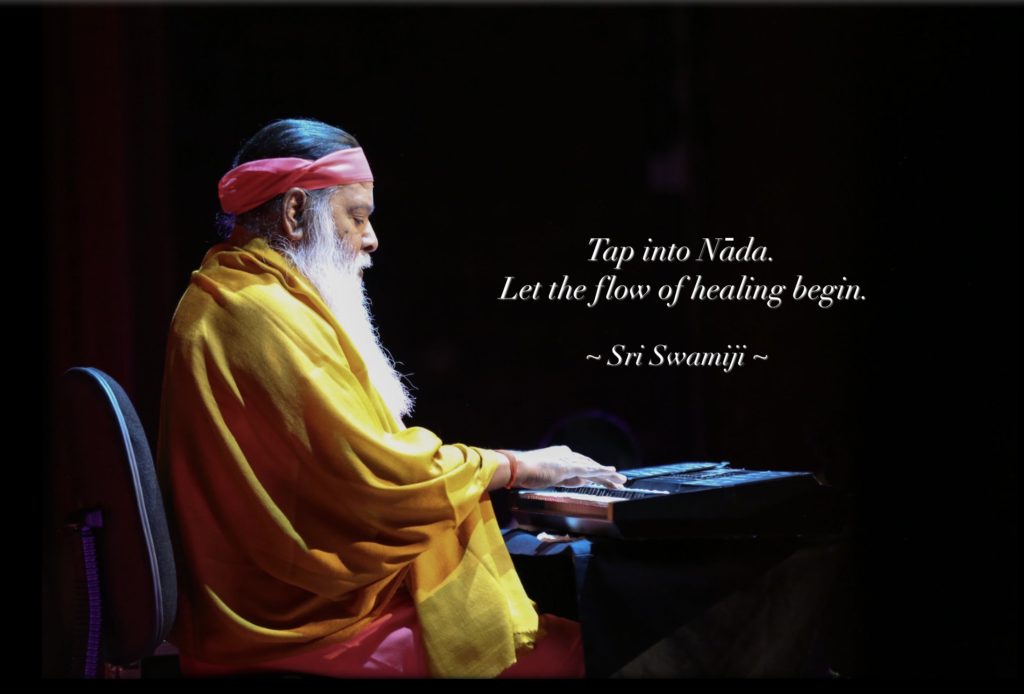
Miracles
‘Each one of the ragas has curative powers. Sri Swamiji has done a lot of research on this, and I have heard first-person accounts of cures through his music therapy. There is a divinity in His music and bhajans which makes it essentially different from others.’ – Maharajapuram Santhanam, renowned Indian musician
‘Transformation of the mind is the greatest miracle.‘ Sri Swamiji says.
Gss Swamiji speaks:
‘People ask: what is the purpose of Swamiji?
Swamiji’s purpose is always in God’s hands
People ask: Who am I? What do I want? What do I follow?
In my innermost heart, I am looking for some good souls. I don’t want any new organisation, and I don’t like the conversion from one religion to another. My way is very different. I don’t belong to any association. I am my own association. I believe in my heart. I am not a messenger, priest, or God.
People ask – who are you? Think, and you will experience Swamiji for yourself. Some people say a yogi, a man of miracles, a healer, a doctor, magician; others say he follows the Vedic way; some say a confusing man. All are correct. Each person has his way of looking at me, but I say I am not a spiritual businessman.
People ask: who is your Guru?
I say that I am my own Guru – Dattatreya, the incarnation of the Trinity. I believe, adore, serve and revere my Lord Datta.
People ask: what is your religion?
I have no religion, but I follow the Hindu religion because I was born a Hindu.
People ask: do you perform miracles?
What are the meaning and use of these miracles? My final answer is that they have no use; it is only a play. I materialise objects sometimes at the request of devotees only to strengthen the bond of friendship between them and Swamiji. I possess all Siddhis. I have many powers, but what about your position? I am all right but what about you? You must recognise your problems, decide what you need and take good advice. In India, so many people are performing miracles, but these are not important. What is important is the removal of your ignorance and suffering.
Keep your mind steady and pray to God. In Swamiji’s method, you are yourself the Guru. Just be calm, and follow your own methods, and believe in them. Your Self is God. Your Self is Guru. Also, take good advice from friends and saints but stay with one Guru. He who opens your heart and gives you knowledge of God, he is your Guru. Don’t use the intellect but use only heart-to-heart feelings to know who your Guru is. Believe in your heart.
You know, God is not the property of Swamis or priests. He belongs to everyone. Try to maintain a life of truth and happiness. Always be satisfied within yourself.
May the choicest blessing of Lord Dattatreya be on you.’
An innumerable number of miracles by GS Swamiji have been observed, and just a few are mentioned below.
A special event in the Datta Peetham took place on June 23, 1999, which was the construction of a sacred centre to install the idol of Lord Venkateshwara, made to match in all respects with the center at Tirupati. The temple built has the idols of Lord Venkateshwara, Mother Padmavati, Dhanvantari, (Physician to the devas), Ganapati, Navagraha, (The nine planets), Garuda, (the Eagle, vehicle for Lord Vishnu), and Anjaneya installed as per the shastras. The special occasion was associated with a miracle witnessed by thousands of devotees present on the day.
At the time of ‘Yantra Pratishta’ in the morning, a superbly bright circle of light encircled the top of the centre. It was in the form of a full circle, and to the onlookers, it looked like the ‘Chakra’ of Lord Vishnu coming down to earth to protect the centre. On the white walls of the inner sanctum where the Lord Venkateshwara idol was installed, it was seen that both behind the idol and to either side, black coloured lines depicting rays of conch and discus, sacred emblems of Lord Vishnu, formed of their own accord. The visitors to the temple can see these marks even today. Also, when GS Swamiji conducted the traditional consecration to all the domes of the buildings where the idols would be installed, devotees were surprised to see a number of special eagles flying round in circles on top of the complex. These eagles had a peculiar white mark across their necks. During the ‘Yantra installation’, the formation of a very bright circle like that of the discus of Lord Vishnu in the sky around the sun was witnessed by over 20,000 devotees. A pattern of rays was coming off the bright circle as though they were emanating from the center of an axle, which circled around the temple complex. They could also see a shining star in the sky at that time. Swamiji descended from the roof and gave a message to those assembled for the ceremony:
‘Victory for righteousness, victory for truth.‘
Even as a child, he organised satsangs, taught bhajans to His friends, and performed siddhis to entertain them, such as turning tree leaves into sweets.
During Maha Shivaratri, Sri Swamiji enters the Homa Kunda unmindful of the surrounding fire. The fire would have scorched an ordinary person, but the flames are powerless before Sri Swamiji, who goes with His bare hands into the fire and materialises Shiva Lingams, Sri Chakras, and other items.
Holy Sites and Pilgrimages
A great proponent of Sanatana Dharma as preached by the first Guru Sri Dattatreya, His Holiness Sri Swamiji has relentlessly toured the length and breadth of India, establishing various Ashramas. Sri Swamiji has established more than 50 centres in India and abroad. Swamiji selected sixteen places in India to build sixteen Datta temples. He decided to give one of the names of sixteen Avataras for each branch. The task of constructing the sixteen temples and installing the deity of Dattatreya in each of them was completed by April 1991. The following are the sixteen branches (Shodasha Datta Kshetras) of the ashram:
Kaalaagni Shamana Dattatreya – Mysuru, Karnataka
Yogiraaja Vallabha – Proddatur, Kadapa District, Andhra Pradesh
Datta Yogiraja – Bengaluru, Karnataka
Gnaana Saagara Dattatreya – Anantapur, Andhra Pradesh
Shyama Kamala Lochana – Vijayawada, Andhra Pradesh
Atrivarada – Machalipatnam, Andhra Pradesh
Samskaraheena Shiva Datta – Jayalakshmi Puram, Andhra Pradesh
Aadi Guru Dattatreya – Chennai, Tamil Nadu
Digambara Datta – Rishikesh, Uttaranchal
Vishvaambhara Avadhoota – Akiveedu, Andhra Pradesh
Devadeva Dattatreya – Noojiveedu, Andhra Pradesh
Datta Avadhoota – Hyderabad
Datta Digambara – Gandigunta, Andhra Pradesh
Siddharaja Dattareya – Kochi, Kerala
Mayamukta Avadhoota – Acharapakkam, Tamil Nadu
Leela Vishvaambara Dattatreya – Surat, Gujarat
In addition,
Datta Kasheeshwara – Mekedatu, Karnataka
Datta Rameshwaram – Manginapudi, Machilipatnam, Andhra Pradesh
Sripada Vallabha Anagha Datta Kshetram, Pitapuram, Andhra Pradesh which also has a Datta Veda Paathashaala
Recently, He has been asked by Indian religious leaders to take care of five other ancient Dattatreya temples.
He has established 9 Navanatha Datta Kshetras in Delhi (Matsyendranath), Nellore (Gorakshanath), Bhimavaram (Jalandharanath), Kadapa (Kanifnath), Kaikaluru (Charpatinath), Srikakulam (Naganath), Kamareddy (Bhartarinath), Eluru (Revananatha), and Gunturu (Gahininath)
Swamiji has also installed 10 Karyasiddhi Hanuman idols, including an 85ft tall one in Trinidad.
Sri Swamiji’s mission has required Him to undertake over 150 foreign trips to many countries where His Holiness has established centers in Australia, Canada, Germany, Malaysia, Switzerland, Trinidad, UK, and the USA.
Among the unique features of the Mysore Ashram are a state-of-the-art music hall and recording studio, the most extensive bonsai garden in India, a 350-species herb garden, a rehabilitation hospital and aviary for over 1,500 parrots, two prominent temples, a hospital, a museum, yoga halls, a Vedic school, and accommodations with a professional kitchen to serve vegetarian meals. There are eighty branches in India, including sixteen Datta temples and fifteen centres abroad. Sri Swamiji holds nine Guinness World Records, including records for the most people chanting (128,918 participants), the largest music therapy session (1,814 participants), the most bird species in an aviary (468), and the largest display of bonsai trees (2,649).
Nada Mantapa, a unique and state-of-the-art music hall, is a testimony to Sri Swamiji’s dedication, attachment, and love for music. The Nada Mantapa auditorium is in the shape of a palm tree leaf (frond). It is the world’s first and only SaptaSwara Devata Mantapam: This Mantapa has deities of the gods representing the seven musical notes: Sa-Agni, Ri-Brahma, Ga-Saraswati, Ma-Parameshwara, Pa-Maha Vishnu, Da-Maha Ganapati, and Ni-Surya Narayana. Twenty-two gigantic tamburas have been sculpted and positioned gracefully against the twenty-two pillars of the auditorium. These twenty-two tamburas represent the twenty-two shrutis mentioned in the Sangeeta Shastra. The auditorium entrance has idols of legendary figures connected with sacred music – Chaitanya Maha Prabhu, Narada Muni, Garuda, Vishwaksena, Anjaneya, Tumburu, Hayagreeva, Nandi, Bhringi, and Ganapati. The porch is colourfully decorated in Tamil Nadu style.
The auditorium is equipped with state-of-the-art sound (Bose Corporation of USA), lighting, and theatrical systems. The staggered seating system can hold more than 3500 people, making it one of the largest performing theatres in India. The vast stage measures up to 2150 sq. ft. with the seats laid out in a radial pattern, such that they fall within an angle of 140 degrees from the performer’s position.
The walls are decorated with giant portraits of eminent music composers of the past. A unique lighting system illuminates the picture of a particular composer whenever his composition is sung or played. For example, when the composition, Samaja Varagamana – of Saint Tyagaraja is played or sung, the lights in front of the portrait of Tyagaraja will automatically light up.
The Honorable Dalai Lama inaugurated this temple in the holy presence of GS Swamiji. He unveiled the plaque and lit a lamp at each of the seven pillars, and with a wooden hammer played on the pillars to bring the notes out. He was highly delighted to see this remarkable technological innovation.
Ganapathy Sachchidananda Swamiji is also recognised far and wide for his extraordinary compassionate heart. Swamiji has established Shuka Vana (Parrot Park), a rehabilitation center for birds in the serene premises of the Mysore Ashram. This park has numerous rare and colourful species of parrots from all over the world. Shuka Vana most importantly gives shelter to injured and uncared for birds with a high degree of commitment and compassion. Sri Swamiji has taken a serious resolve to take care of physically challenged birds that are not receiving proper care with their owners who have lost interest in them. The Shuka Vana is a distinctive aviary where one gets the most fabulous opportunity to be in the divine presence of the living, breathing deity that presides over one’s own zodiac sign and a parrot representing one’s planet and birth date. Here one finds the parrot that stands as a symbol for each day of the month as well. It is of great benefit to individuals to view these rare birds. The reverence shown to these parrots will exert a strong positive influence on the devotees’ lives. Offering services to the parrot such as feeding, housing, training, and health maintenance, will enhance both the individual’s worldly and spiritual lives. It decreases the magnitude of learning to speak different languages or repeating the sounds made by various objects.
Swamiji has established a nursing home in Hyderabad with the project title named ‘Ammavodi.’ He also opened an organisation called [http://www.serveveda.org I-S.E.R.V.E] (The Institute of Scientific Research on Vedas) with headquarters in Hyderabad. The project’s mission is to decipher the scientific content in ancient Vedas.
Recent additions to the Ashram include the ‘Vishwamå Museum and the Bonsai Garden. The museum hosts articles that Swami Sachchidananda received as gifts on tours to different countries. It includes articles such as a ship carved in jade from China, a Dasavatharam bowl from the US, a mercury Ganapati and more. The Bonsai Garden is a collection of bonsai trees in a serene park-like atmosphere. Visitors are encouraged to appreciate the trees and enjoy nature in this garden.
Swamiji is an expert on the subject of medicinal herbs. The knowledge did not come from any form of study but is totally ‘self-acquired.’ This came about in the earlier days of his life with the blessings of Sage Agastya Maharshi. As an act of gratitude to Sage Agastya, His Guru, Sri Swamiji, constructed a large herbal garden called the Kishkinda Herbal Garden near the residence of the Guru (Guru Nilayam)
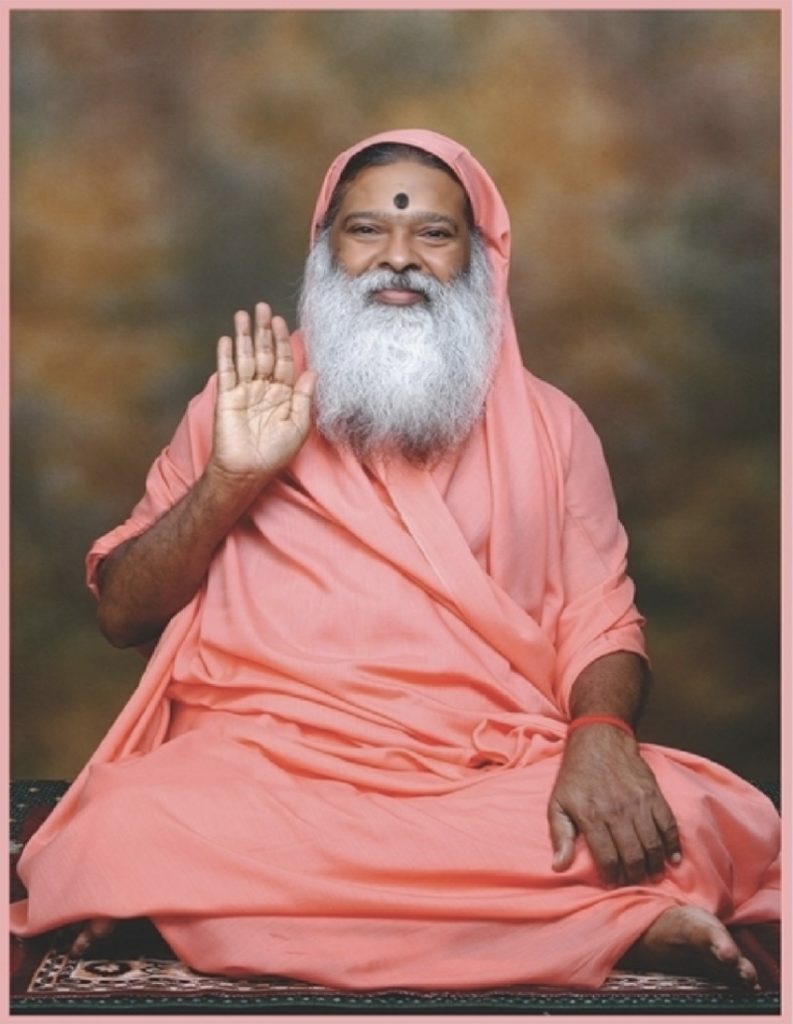
Bibliography
- Reflections of the Absolute: The Life of Sri Ganapathy Sachchidananda Swamiji, By K.V. Krishna Murthy
- Wonders Of The Holy Master (Memorable Experiences of North American Devotees) Paperback–January 1, 2001
- Sri Datta Darsanam: Vision of Datta, by Sri Ganapathy Sachchidananda Swamiji

